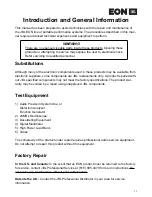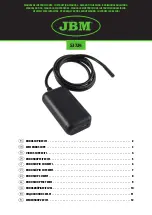
10-12
Valleylab FT10 Energy Platform User’s Guide
Standards and IEC Classifications
IP21 Liquid Ingress/Spillage
(IEC 60601-1 and IEC 60601-2-2)
The VLFT10GEN is constructed so that liquid spillage in normal use does not wet electrical
insulation or other components which when wetted are likely to adversely affect the safety
of the equipment.
Voltage Transients – Energy Platform Mains Transfer
(IEC 60601-1, IEC 60601-2-2, and ANSI/AAMI HF18)
The VLFT10GEN continues to operate normally with no errors or system failures when
transfer is made between line AC and an emergency system-voltage source. The system
may momentarily shut down in a safe mode depending on the switchover time.
CISPR 11 Class A
The emissions characteristics of this equipment make it suitable for use in industrial areas
and hospitals (CISPR 11 class A). If it is used in a residential environment (for which CISPR
11 class B is normally required), this equipment may not offer adequate protection to
radio-frequency communication services. The user may need to take mitigation measures,
such as relocating or re-orienting the equipment.
Electromagnetic Compatibility
(IEC 60601-1-2 and IEC 60601-2-2)
The VLFT10GEN complies with the appropriate IEC 60601-1-2 and 60601-2-2
specifications regarding electromagnetic compatibility.
Important
RFID and WiFi function may be interfered with by other equipment even if that other equipment
complies with CISPR emission requirements.
Notice
The VLFT10GEN requires special precautions regarding EMC and needs to be installed and put into
service according to the EMC information provided in the
Valleylab FT10 Energy Platform Service
Manual
.
Portable and mobile RF communications equipment can affect the VLFT10GEN. Refer to the EMC
information provided in the
Valleylab FT10 Energy Platform Service Manual
.
The system should not be used adjacent to or stacked with equipment other than specified in the
Valleylab FT10 Energy Platform User Guide and Service Manual
. If adjacent or stacked use is
necessary, the system should be observed to verify normal operation in the configuration in which
it will be used.















































